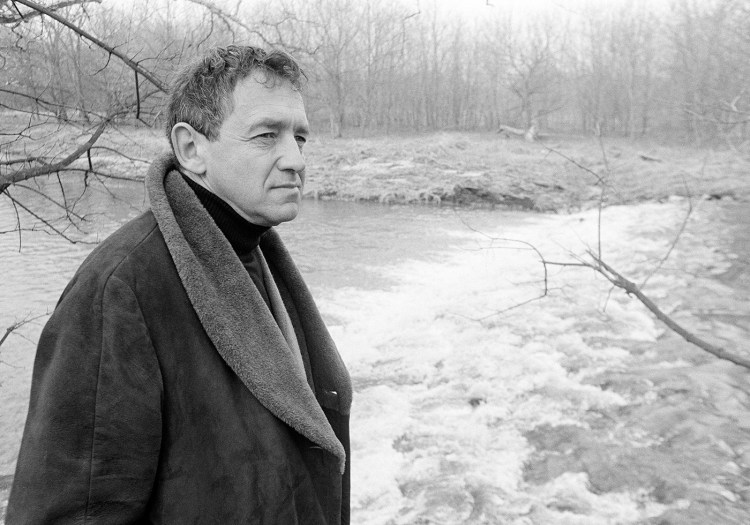Jan. 16, 2009: Realist painter Andrew Wyeth dies in Chadds Ford, Pennsylvania, his birthplace, at age 91 after a 70-year career.

He later is buried near his summer home in South Cushing, Maine, where he once observed Christina Olson (1893-1968) shuffling slowly up a hill toward her home, using her hands to propel herself because a genetic disease had robbed her of the use of her legs.

Andrew Wyeth is buried in a cemetery in Cushing in the same field where he painted his iconic painting Christina’s World in 1948. Christina Olson, the subject of the painting, is also buried there. Gregory Rec/Staff Photographer
Wyeth depicted the scene in the 1948 oil painting “Christina’s World,” which became an icon of American art. Painted from the viewpoint of someone watching her from a cemetery, the piece is in the collection of the Museum of Modern Art in New York. Olson is buried in the same cemetery, as is Wyeth. The Olson farmhouse now belongs to the Farnsworth Art Museum in Rockland and has been restored to look the way it did when Wyeth painted it.
Wyeth is one of the best-known American artists of the 20th century. At his first one-man show of watercolors in 1937, the entire inventory of paintings sold out, foreshadowing his lifelong success. His style contradicted the prevailing trend toward abstract art, and he drew inspiration from his neighbors and what he saw during solitary walks.
His father, N.C. Wyeth (1882-1945), a well-known artist and illustrator, died with his 3-year-old grandson when a freight train struck the car in which they were riding in Chadds Ford. Besides the personal loss, Andrew later said the incident was a formative event in his artistic development. His son Jamie Wyeth (1946- ) also is a well-known artist who paints in the realist tradition.
The Farnsworth museum has one of the nation’s largest collections of art by all three Wyeths.
Joseph Owen is a retired copy desk chief of the Morning Sentinel and Kennebec Journal and board member of the Kennebec Historical Society. He can be contacted at: jowen@mainetoday.com.
Presented by:

Send questions/comments to the editors.



Comments are no longer available on this story